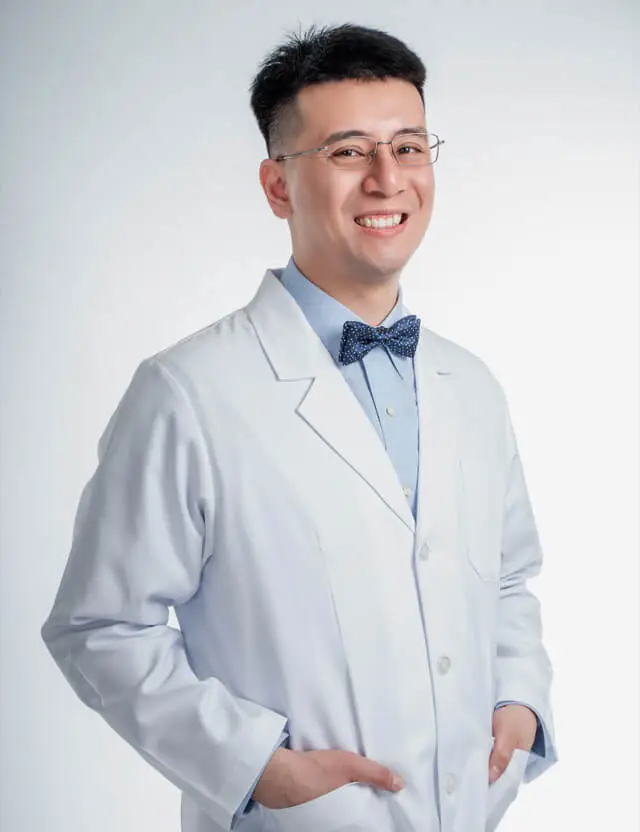What is a Receding Hairline?
A receding hairline is characterized by a progressive loss of hair along the front hairline it is also known as androgenetic alopecia, resulting in an M-shaped pattern of sparse or thinning hair around the temples. The hair loss is localized in the front and sides of the scalp, while the hair on top of the head remains reasonably intact. In this blog, we will talk about receding hairline, the causes and solutions.
Causes of a Receding Hairline
A receding hairline can be caused by several different circumstances. Among the primary factors are:
Genetics
Genetics is connected to both male and female pattern baldness. Those who have a family history of receding hairlines are more prone to suffer it as they age. The genes involved influence the susceptibility of hair follicles to dihydrotestosterone (DHT).
Hormonal Changes
Hormones such as DHT and testosterone can induce hair loss and receding hairlines. Thyroid and estrogen levels may also be affected. Hormone variations are prevalent throughout puberty, menopause, and perimenopause.
Stress
High-stress levels over a lengthy period may hasten hair loss and recession. Cortisol, a stress hormone, can affect the hair growth cycle and follicles.
Nutritional Deficiencies
A lack of important vitamins and minerals in your diet, like as iron, zinc, and protein, can cause excessive shedding and thinning. To support hair health, eat a well-balanced diet rich in essential nutrients.
Hereditary male or female pattern baldness is the most common cause. However, for people who are genetically predisposed to hair loss, lifestyle, health, and environmental factors can hasten a receding hairline. Understanding the underlying reasons can aid in the development of treatment and preventative strategies.
Treatments for a Receding Hairline
A receding hairline can be slowed or reversed with a variety of medicinal and surgical procedures.
Medications
Male pattern baldness is typically treated with medications such as finasteride and minoxidil. Finasteride inhibits the DHT hormone, which promotes hair loss. Minoxidil promotes hair growth.
These medicines, when used consistently, can help delay or halt a receding hairline. They are more effective in retaining existing hair rather than regrowing lost hair.
Hair Transplants
Hair transplants are surgical procedures that transplant hair follicles from the back of the scalp into thinning or balding regions or bald spot. This can provide the illusion of a full, natural hairline. Transplants are efficient in restoring hairlines, but complete coverage frequently necessitates numerous surgeries.
PRP Injections
PRP therapy, also known as platelet-rich plasma therapy, involves injecting a concentrated concentration of a patient’s platelets back into the scalp. The goal of this injection therapy is to activate dormant hair follicles and induce new hair growth. While encouraging, additional study is needed to validate the efficacy of PRP.
Low-Level Laser Therapy
Lasers are used in low-level laser treatment (LLLT) to give light energy to hair follicles. LLLT may help delay hair loss and boost density, according to certain small trials. However, the outcomes might be subtle, and additional study on appropriate laser settings is required.
Lifestyle Changes to Slow Down Hairloss
Changes in nutrition, exercise, and stress management can occasionally halt the receding hairline. While genetics play an important part in hair loss, lifestyle choices can aggravate or alleviate the problem.
Reduce Stress
Chronic stress raises cortisol levels, which can have a deleterious influence on hair follicles. Finding healthy ways to cope with stress, such as via exercise, meditation, therapy, or other relaxation techniques, may be beneficial. When possible, reduce needless causes of stress.
Eat a Balanced Diet
Consume a nutritious, well-balanced meal rich in protein, vitamins, and minerals. Biotin, vitamin D, zinc, iron, and omega-3 fatty acids may all be beneficial to hair health. Avoid crash diets and restricted eating habits.
Take Supplements
Some substances said to aid hair development include:
10,000 mcg biotin per day
600 IU of vitamin D each day
Zinc – 30mg daily
Women should take 18mg of iron each day.
However, before using supplements, especially in excessive dosages, consult your doctor.
Scalp Massages
Massaging the scalp gently improves circulation and promotes hair follicles. Massage the scalp for 5-10 minutes daily with gentle, circular strokes of the fingertips. To decrease friction, utilize natural oils. In certain circumstances, scalp massages might help reduce hair loss.
Making good lifestyle choices can benefit hair health and perhaps halt the progression of a receding hairline. While it is not guaranteed to halt hair loss, maintaining a healthy lifestyle is prudent. Consult a doctor about particular diet, exercise, or stress-reduction strategies.
Hairstyles for a Receding Hairline
When coping with a receding hairline, the appropriate haircut can assist reduce the appearance of thinning hair cause the hairs fall. Crew cuts and buzzcuts work nicely since they do not highlight the receding hairline like lengthier styles may.
Spiked hairstyles are another wonderful choice since the texture hides thinning hair. Gels, waxes, and sprays can be used to increase volume and make hair seem fuller. Choose matte finishes over wet appearances, which can reveal the scalp.
Avoiding tight ponytails and other hairstyles that tug directly on the hairline is also a good suggestion. The traction might cause more hair loss over time. When feasible, let your hair down.
Experiment with many short haircuts to discover one that flatters your facial shape and hides thinning hair. A qualified barber or stylist can also recommend appealing haircuts and styling techniques.
A receding hairline may be disguised with the correct haircut. To hide thinning, use short styles, texture, and volume. Avoid haircuts that tug at the hairline.
Hair Replacement Options
There are various ways to restore lost hair or create the illusion of fuller hair:
Hair Systems
Hair systems, commonly known as hairpieces or toupees, are a non-surgical hair replacement alternative. A hair system is a personalized head of synthetic or real hair that is affixed to your head using tape or glue.
High-quality systems are produced using real hair that matches the color and structure of your hair. If correctly fitted and placed, they may offer a smooth, natural effect. Hair systems come in a variety of styles and must be removed at night.
While less expensive than transplants, they need regular care and replacement.
Hair Fibers
Natural keratin protein is used to make hair fibers, which come in a range of hues. They are applied to thinning regions of the scalp to provide the illusion of thicker hair.
To give a thicker appearance, the microscopic threads bind to existing hair and scalp. They may, however, be readily removed. Hair fibers offer cosmetic covering but do not treat hair loss.
They can be a fantastic alternative for rapid, low-cost concealment in between haircuts or other hair loss treatments.
Scalp Micropigmentation
Scalp micropigmentation (SMP), also known as medical hair tattooing, gives the appearance of short buzzed hair. A technician applies pigment to the scalp in tiny spots that resemble shaved hair follicles with a thin tattoo pen.
It helps repair recession hairlines and provides the appearance of thicker hair in thinning regions. The effects are realistic but permanent, thus it may not be suitable for people in the early stages and type of hair loss seeking a reversible solution. SMP expenses range from $1,000 to $4000, depending on the quantity of scalp covering.
Hair Transplants
Hair transplantation is a surgical process in which hair follicles are extracted from the back and sides of the head (regions not prone to hair loss) and transplanted into thinning or balding areas of the scalp. If you have an abundance of donor hair, transplants are the most effective permanent treatment for replacing lost hair.
However, results take time to appear since transplanted follicles shed and regenerate. Recovery time is around two weeks, and numerous operations are sometimes required for complete coverage.
Transplants normally cost between $4000 and $15000. The results are natural-looking and long-lasting. It is the most intrusive and costly procedure, but it results in permanent hair regeneration.
Conclusion
A receding hairline is more than just losing hair; it also carries major emotional and cultural implications. Understanding the reasons for this common phenomenon and the symptoms of a receding hairline, as well as identifying viable treatments, can help individuals afflicted restore their self-assurance and face the world with renewed confidence.
If you enjoyed this article, you may also want to read this article on Losing Your Hair? Male Pattern Baldness: Causes and Treatments.
*This information is not intended to serve as a substitute for professional medical or dietary advice tailored to individual needs.
Dr. Kimberly Langdon has been an MD for 31 years, board-certified obstetrician/gynecologist with 19-years of clinical experience. She graduated from The Ohio State University College of Medicine, earning Honors in many rotations. She then completed her OB/GYN residency program at The Ohio State University Medical Center, earning first-place accolades for her Senior Research Project and Score of 98th percentile on a National Proficiency Test.
During her clinical career, she delivered over 2000 babies and specialized in minimally invasive procedures, menopause, endometriosis, menstrual disorders, and polycystic ovarian syndrome. After retiring from clinical practice, she founded a medical device company to commercialize her two patented and four patent-pending medical devices for both life-threatening and non-life-threatening infections.




